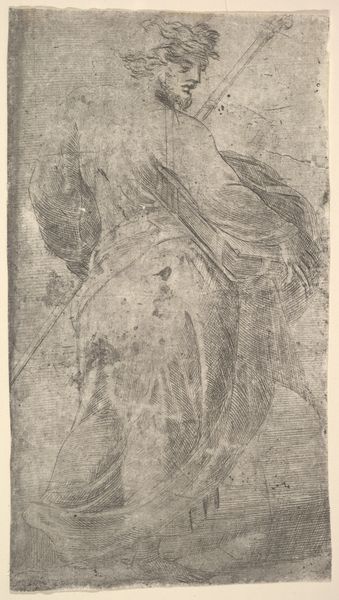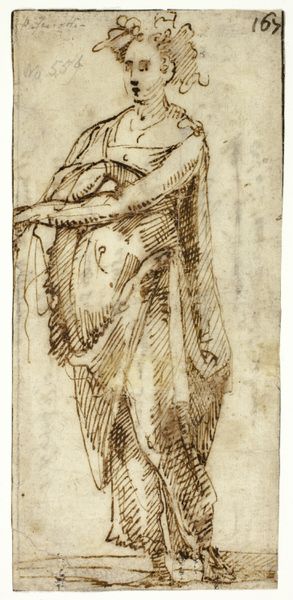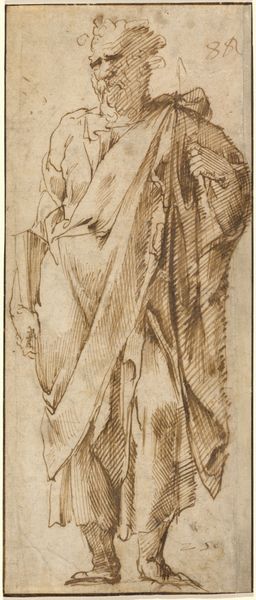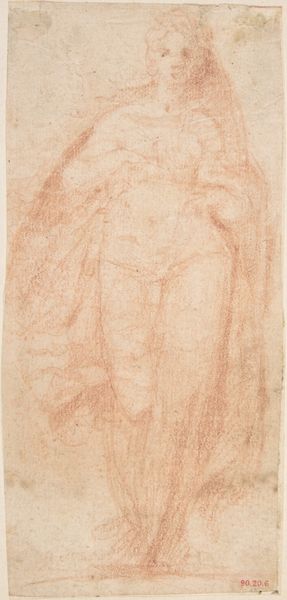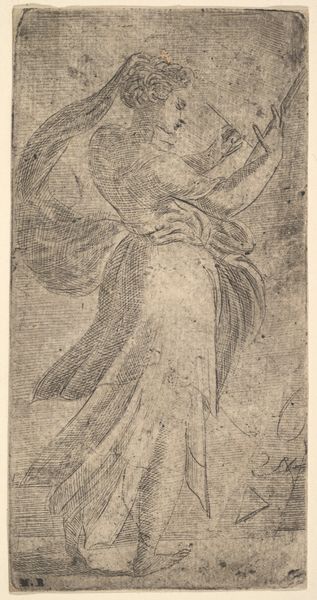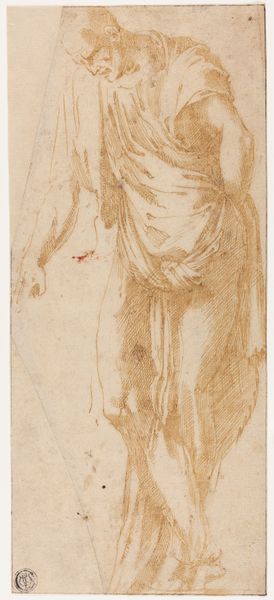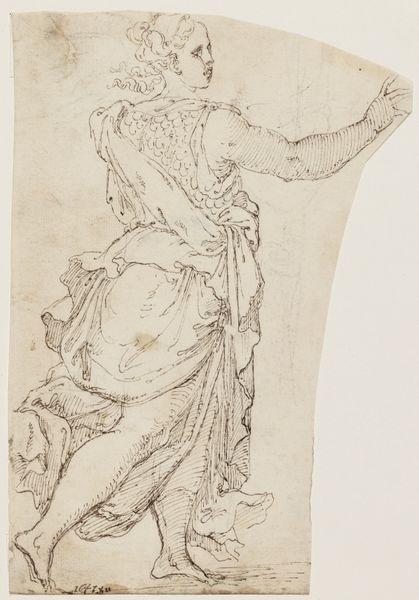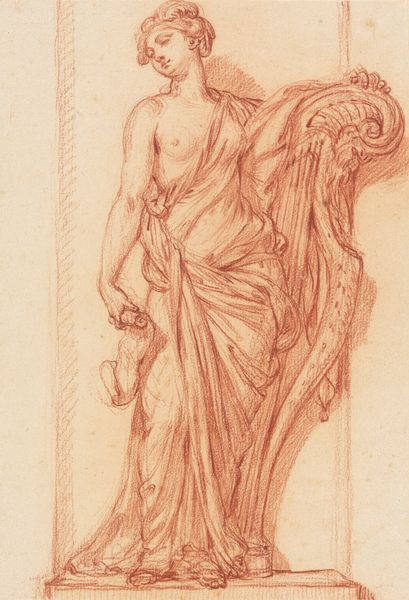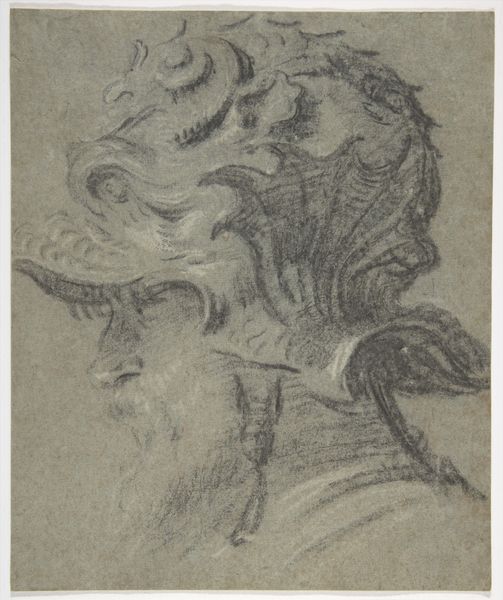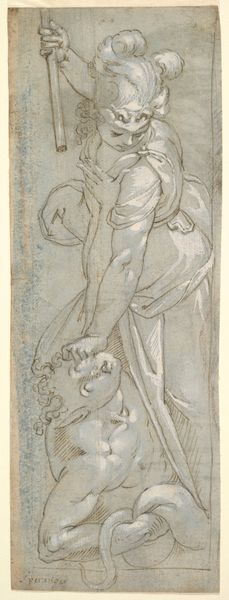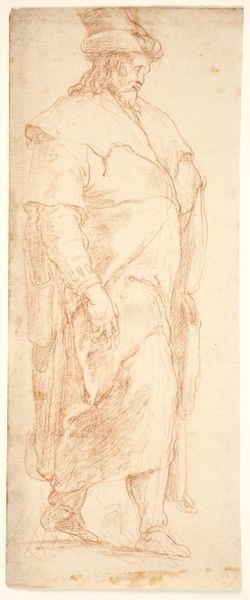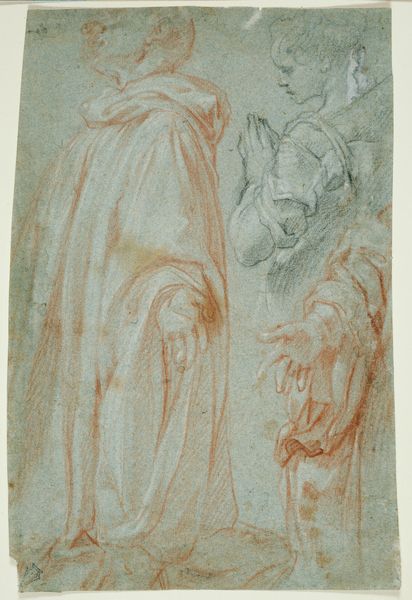
Stehende Frau von vorn, die Rechte zum Kopf führend, rechts hinter ihr eine zweite Figur c. 1522 - 1524
0:00
0:00
drawing, ink, indian-ink
#
portrait
#
drawing
#
high-renaissance
#
figuration
#
ink
#
underpainting
#
indian-ink
Copyright: Public Domain
Editor: Here we have Parmigianino’s "Standing Woman, facing forwards, with her Right Hand Leading to her Head; to the Right Behind Her, a Second Figure," an Indian ink drawing from around 1522-1524. I’m struck by how gestural and preparatory it feels; it’s less a finished piece and more like a glimpse into the artist’s process. What do you see in this drawing? Curator: The figure immediately places us within the context of the High Renaissance, where the study of the human form was paramount. The loose lines, while seemingly simple, speak to a deeper understanding of anatomy and contrapposto. The public role of art in that period, heavily influenced by the Church and wealthy patrons, often dictated that even preparatory drawings served a purpose, showcasing the artist's skill and erudition. This could be a study for a larger, more public work. Is it possible this was part of the commissioning process? Editor: That’s fascinating! I hadn't considered its potential function as part of a larger project pitch or patron communication. Given the social hierarchies, would Parmigianino have much autonomy in depicting the figure, or would patrons heavily dictate even the posture? Curator: Autonomy was certainly negotiated. While artists like Parmigianino gained increasing recognition, the patronage system still heavily influenced the subject matter and overall tone. Patrons often had specific agendas, wishing to project an image of power, piety, or classical learning. The slightly awkward pose and obscured face, in this drawing, might be evidence of Parmigianino working through the balance between his artistic vision and fulfilling those expectations. Editor: So, the "unfinished" feel I noticed could also stem from the push and pull of different interests shaping its creation. That really shifts my understanding of what I initially saw as simply a sketch. Curator: Exactly. By considering the socio-political landscape, we see the drawing not just as an isolated artistic endeavor, but as a product of a complex interplay between artist, patron, and prevailing cultural values. Editor: I'll definitely remember to ask what power dynamics shaped a piece. Curator: A key question for any art historian to keep in mind.
Comments
No comments
Be the first to comment and join the conversation on the ultimate creative platform.
